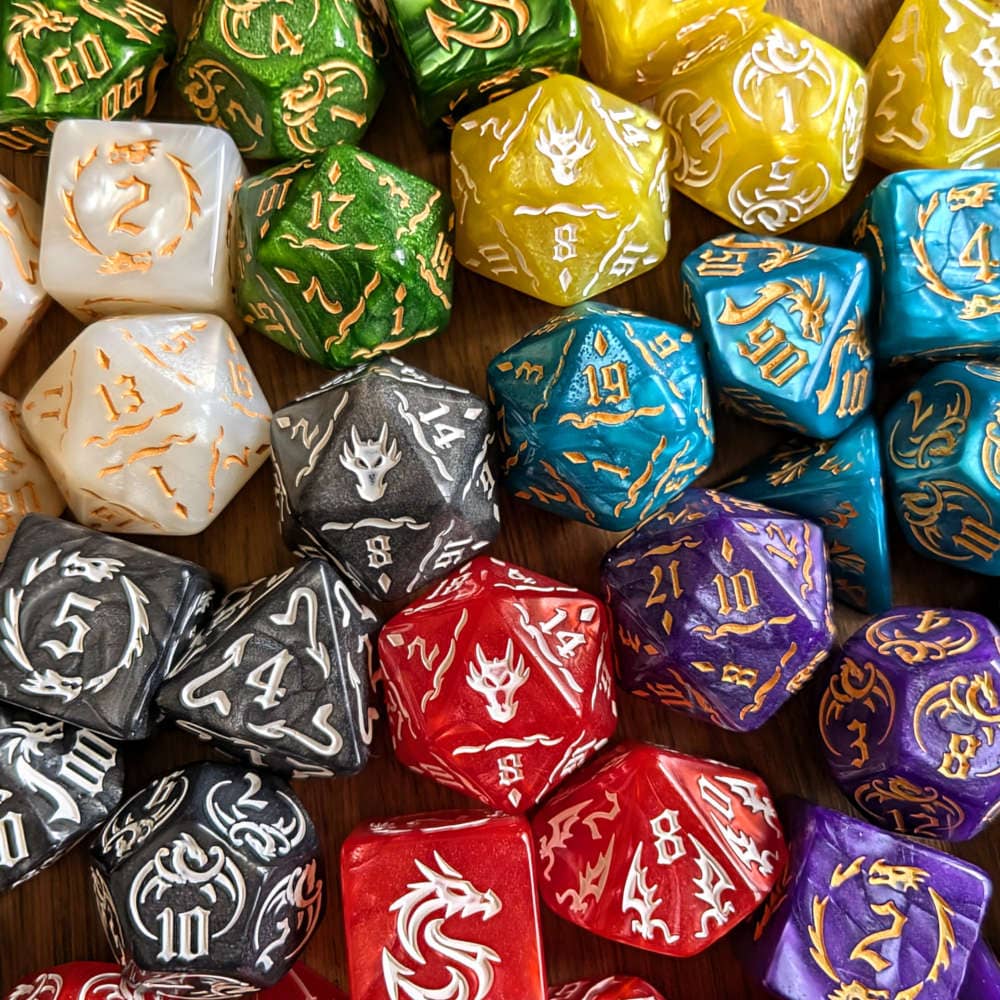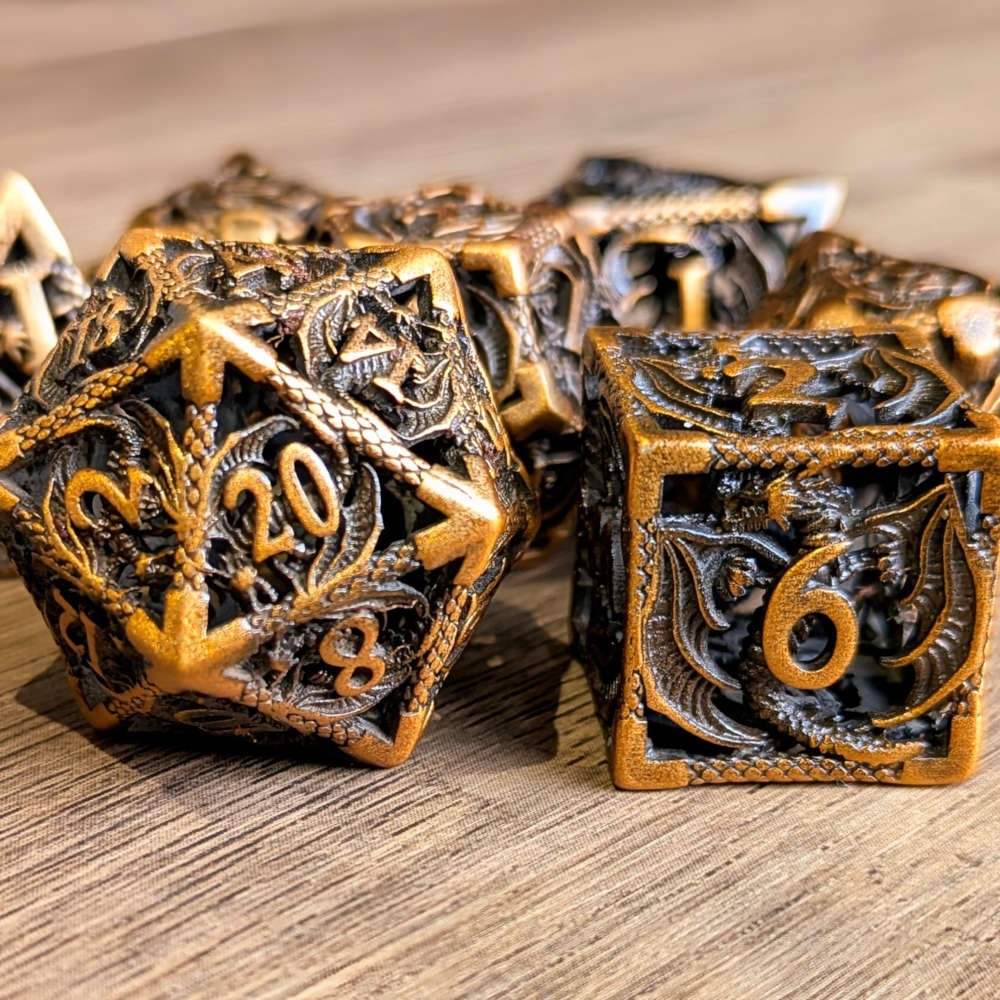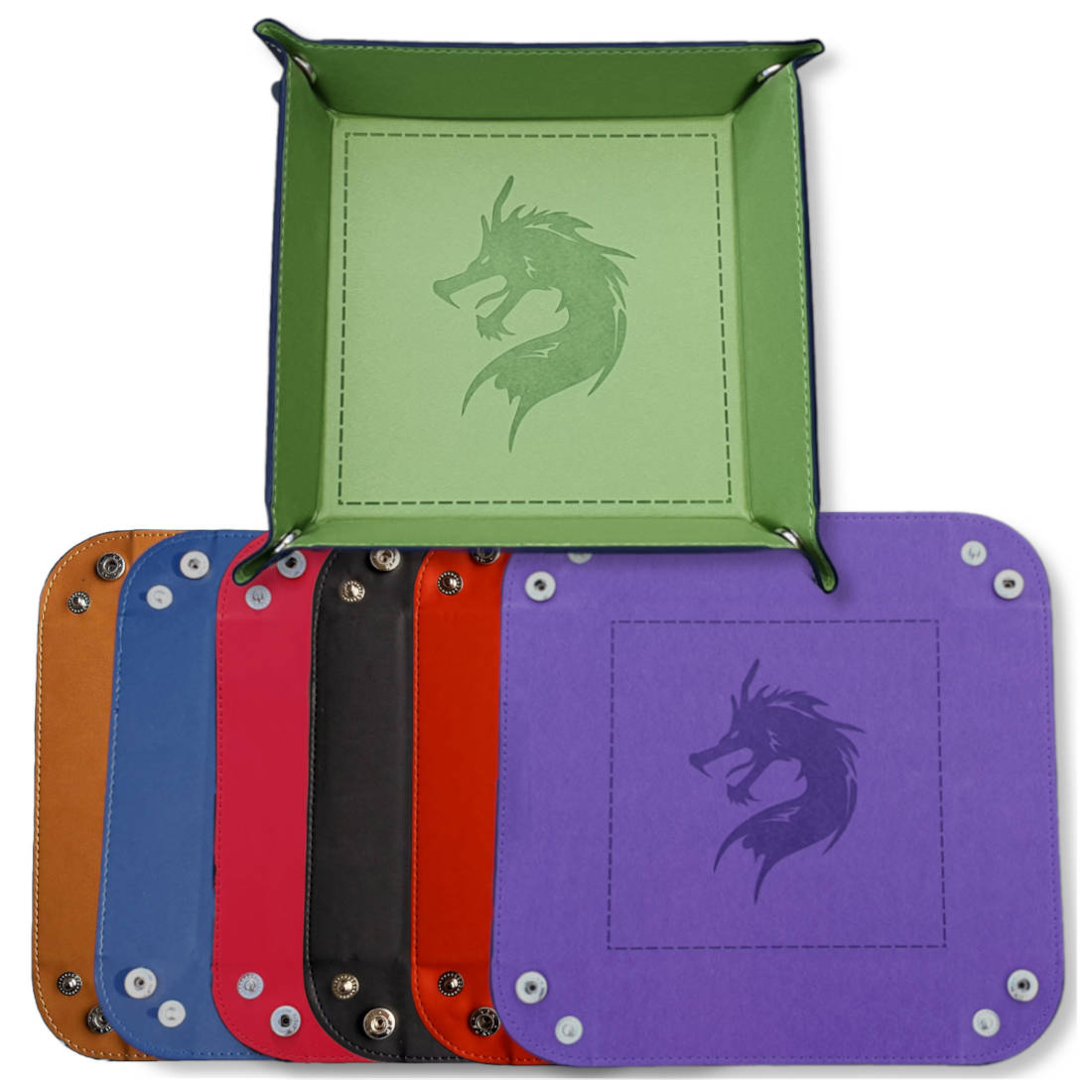What are dice towers for?

In the enchanting realm of tabletop role-playing games, dice are the heartbeats of chance and destiny. But what if there was a way to infuse a touch of magic into the way these dice are cast? Enter the dice tower - a captivating and ingenious device that adds an element of anticipation and theatrics to the act of rolling dice.
In this guide, we'll unravel the mysteries of dice towers and explain what they are, how they work, whether they are truly random, and whether they are worth it for your D&D or TTRPG table.
What is a dice tower?
A dice tower is a tool used by tabletop gamers to roll dice fairly. It’s a hollow, vertical rectangular prism that comes in a range of different designs.

Source: Etsy
Dice are dropped inside at the top, where they fall through the tower, hitting baffles, dowels, or other objects on their way down. After existing the bottom, you’ll get a more random roll, eliminating some methods of cheating which may be done when rolling dice by hand.
How does a dice tower work?
The core components of a dice tower include:
- The tower itself: this is the central structure, typically in the shape of a vertical rectangular prism. It houses the baffles and channels that contribute to the randomisation of dice rolls.
- Baffles: these are the internal features that guide the dice through a series of tumbles and bounces, ensuring a more random outcome.
- Exit ramp: positioned at the bottom of the tower, the exit ramp allows the dice to spill out gracefully onto the gaming surface.
- Collection tray: a small tray or area is often included at the base of the tower to catch the dice and prevent them from scattering. Not all dice towers have this, however, and if yours doesn’t, make sure you understand what to do if the dice roll off the table.
There are lots of different types of dice towers, which cater to different preferences and gaming needs:
- Classic dice tower: a straightforward design where dice are dropped in from the top and roll down through baffles before emerging at the bottom.
- Double dice tower: a dual version that accommodates two players, allowing them to roll their dice simultaneously in separate towers.
- Hexagon dice tower: Sporting six sides, this tower offers multiple pathways for dice to roll down, ensuring a more intricate journey.
- Modular dice tower: a customisable tower that can be assembled and disassembled in various configurations, enabling unique designs.
- Magnetic dice tower: this tower employs magnets to hold its components together and can be easily taken apart for transport.
- Wooden dice tower: adding an air of sophistication, these towers are crafted from high-quality wood and can feature intricate carvings and decorations.
What is the point of a dice tower?
A dice tower is more than just a visually appealing accessory for tabletop gaming; it serves several practical purposes that contribute to the overall gaming experience. The main purpose of a dice tower is to ensure fairness and randomness by removing a player’s influence on dice rolls.
The baffles and channels inside the tower introduce an element of unpredictability, ensuring that no player can manipulate the outcome of their rolls. This level of impartiality is crucial in maintaining the integrity of games that rely on chance.
Rolling dice within a tower reduces the chances of dice scattering across the table or knocking into game pieces, minimising disruptions to the game flow. This fosters a more focused and organised gaming environment, allowing players to concentrate on the unfolding narrative and strategic decisions.
Dice towers also introduce an element of suspense and anticipation. As the dice make their tumbling journey through the tower, players are momentarily held in suspense, waiting to see the outcome. This added theatricality can make mundane dice rolls feel more exciting and engaging.
For some players, dice towers are simply a fun and immersive addition to their gaming setup. The auditory experience of dice clattering and bouncing against the baffles as they roll through the tower can be both satisfying and delightful. It's a tactile and sensory engagement that enhances the tactile pleasure of handling physical game components.
Are dice towers random?
The level of randomness achieved through a dice tower largely hinges on its design. When a dice tower is well-designed and thoughtfully crafted, it produces more random outcomes compared to traditional hand-rolling.
One notable advantage of using a dice tower is that it eliminates the variability introduced by individual throwing techniques. When rolling dice by hand, the force, angle, and motion applied by each player can subtly influence how the dice land and settle, potentially skewing the results. By utilising a dice tower, all dice undergo a consistent and standardised journey, minimising any potential bias introduced by human factors.
However, it's important to note that not all dice towers are created equal. Some may have more intricate internal designs that facilitate a more randomised outcome, while others might be simpler in structure. Before selecting a dice tower, thoroughly examine its design and construction. Look for towers that feature multiple baffles and ramps, as these elements enhance the randomness of dice rolls.
How do you use a dice tower in D&D?
Using a dice tower in D&D is a straightforward process: simply drop the dice into the top entrance of the dice tower, observe as they make their way through the tower, and read the result once they tumble out and settle at the bottom.
For some dramatic moments in D&D, you might want to introduce an element of suspense by conducting a "blind roll". In this scenario, you can use the dice tower in conjunction with the Dungeon Master's screen to keep the result hidden until you're ready to reveal it. Position the dice tower in a way that the Dungeon Master can only see the result, perhaps by hiding the landing area behind the DM screen. This can add an extra layer of tension and surprise to pivotal moments in your campaign, as the outcome remains a secret until dramatically unveiled.
Why are dice towers so expensive?
The cost of dice towers can vary significantly. Generally, the more expensive the dice tower, the higher quality its materials are, and the better designed it is, meaning it will last longer and produce more random outcomes.
While budget-friendly dice towers are available, choosing a more expensive dice tower can provide you with a more satisfying and reliable rolling experience.
What is the world’s oldest dice tower?
The Vettweiss-Froitzheim dice tower is a Roman artifact that holds the esteemed title of being the oldest surviving dice tower in the world. Dating back to the fourth century AD, it was discovered in 1985 on the site of a villa in Germany.

It is an upright, hollow tower made of copper-alloy plate. The tower is decorated on all faces with pierced patterns and some Latin text which reads: “With the Picts defeated, The enemy has been destroyed, So play in safety”.
Around the top of the three remaining faces, it reads: “Use [me] and live happily”.
Are dice towers necessary?
No, you don’t need a dice tower to play D&D or other tabletop games. However, some people like to use them to ensure fair rolls and remove any possibility of cheating.
Are dice towers worth it?
Absolutely, dice towers offer several benefits that make them a valuable addition to tabletop gaming:
- Randomness: dice towers provide a reliable way to achieve random dice rolls, enhancing the integrity of your game's outcomes.
- Containment: dice towers prevent dice from rolling off the table, reducing the risk of disrupting the game or knocking over miniatures.
- Aesthetic appeal: many dice towers feature intricate designs, adding an aesthetic element to your gaming setup.
- Accessibility: dice towers can be especially helpful for disabled players, making it easier for them to roll dice independently.
- Ease of use: you can easily craft a simple dice tower by hand or utilise 3D printing. They are also readily available for purchase.
As some players prefer the tactile experience of rolling dice in their hands, a dice tray can be used instead of a dice tower to achieve both randomness and visibility. Keep in mind that if you have custom-sized dice, it's a good idea to check the compatibility with your chosen dice tower.
In conclusion, dice towers offer numerous advantages that contribute to a smoother and more enjoyable gaming session, catering to a range of preferences and needs among players.
Dice and accessories to guide your adventures
If you're interested in enhancing your gaming experience further, don't forget to check out our range of D&D dice sets and D&D dice trays.





